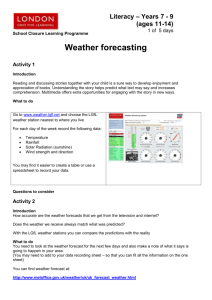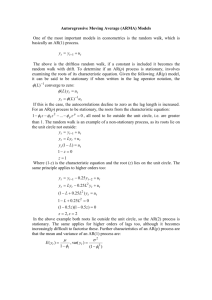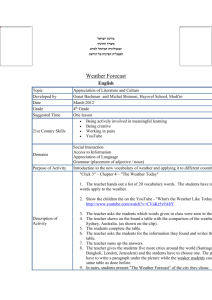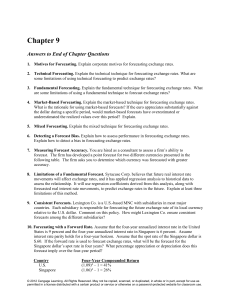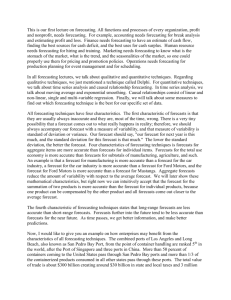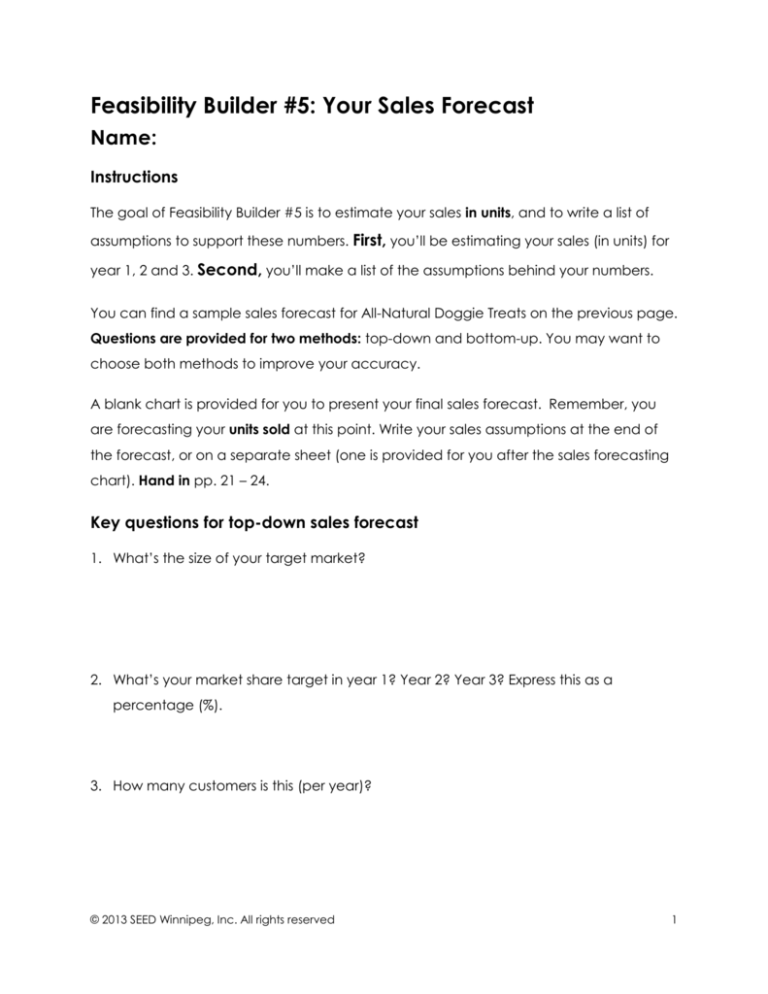
Feasibility Builder #5: Your Sales Forecast
Name:
Instructions
The goal of Feasibility Builder #5 is to estimate your sales in units, and to write a list of
assumptions to support these numbers. First, you’ll be estimating your sales (in units) for
year 1, 2 and 3. Second, you’ll make a list of the assumptions behind your numbers.
You can find a sample sales forecast for All-Natural Doggie Treats on the previous page.
Questions are provided for two methods: top-down and bottom-up. You may want to
choose both methods to improve your accuracy.
A blank chart is provided for you to present your final sales forecast. Remember, you
are forecasting your units sold at this point. Write your sales assumptions at the end of
the forecast, or on a separate sheet (one is provided for you after the sales forecasting
chart). Hand in pp. 21 – 24.
Key questions for top-down sales forecast
1. What’s the size of your target market?
2. What’s your market share target in year 1? Year 2? Year 3? Express this as a
percentage (%).
3. How many customers is this (per year)?
© 2013 SEED Winnipeg, Inc. All rights reserved
1
Session 5 – Participant Workbook
4. How many customers is this per month? Hint: how often do these customers buy
(daily, weekly, monthly, yearly)? Are there seasons where you will sell more? Less?
Show this in your final forecast.
5. How do you know (these are your sales assumptions)? Write your assumptions under
the sales forecasting chart (as shown in the All-Natural example on p. 15) or on a
separate sheet of paper.
Key questions for bottom-up sales forecast
1. What is your sales “unit” (e.g. hour, package, customer, lesson, dozen, ride, meal,
etc…)?
2. What’s your sales strategy (steady sales, slow progress or big bang)?
3.
How often do your customers by a “unit” (daily, weekly, monthly, yearly)? Are there
seasons where you will sell more? Less?
4. How many units do they buy (e.g. each hour, day, week)?
5. Given your answer to #3, how many units can you sell each month?
6. How do you know (these are your sales assumptions)? Write your assumptions under
the sales forecasting chart (as shown in the All-Natural Doggie Treats example on p.
15) or on a separate sheet of paper.
© 2013 SEED Winnipeg, Inc. All rights reserved
2
Feasibility Builder 5: Your Sales Forecast
Bottom-up sales forecast (units sold in first 3 years of operation)
NAME: ___________________________________
Instructions:
At the top of each column, write name of the month (e.g. month 1 = your start-up month)
What are your units? In the left columns, write the name of the product/service or revenue stream
Under each month, forecast how many units you’ll sell of each product/service or revenue stream
Write your sales assumptions on the next page
Month
Year 1
total
Year 2
total
Year 3
total
TOTAL
© 2013 SEED Winnipeg, Inc. All rights reserved
3
Feasibility Builder 5: Your Sales Assumptions
© 2013 SEED Winnipeg, Inc. All rights reserved
4





